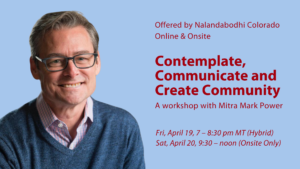It has been almost a year since I left my home and started living on the other side of the Atlantic Ocean. It has been a mind-opening experience in many ways. Sometimes, I am quite aware of Buddhist teachings I have heard in the past or contemplated in meditation, while other times, the words of the Buddha have taken me by surprise, suddenly making perfect sense. This is the beauty of following the Buddhist path — the magic that takes place once you get off the meditation cushion and into real life.
A couple of weeks ago, I was video-calling with a friend in Mexico who asked me how I was doing. After an account of the most important facts, she prompted me to talk a little bit more about my emotional state, related specifically to the fact of living in someone else’s house. I hesitated for a bit and then came up with what appeared to be a contradictory answer: “Sometimes I feel trapped,” I said, “as if I were in a prison and cannot find a way out; whereas other times, I feel completely free, as if all the walls have crumbled down around me.”
The moment I articulated the answer, my mind stopped, a gap opened, and I had a realization: If the place where I am living has not changed (i.e., I have been living in the same apartment for the past three months,) then the sensations of being trapped or of feeling free have to be the product of my own mind.
This is what my teachers call “a taste of freedom from confusion”, I thought to myself. I shared the experience with my friend, and we both smiled. It is not that the world is black and white, good or bad, agreeable or disagreeable. It is that we project our concepts and our labels, based on our subjective perception of the circumstances, on whatever we are experiencing or on whomever we are interacting with. Then we react as if our projection were true and many times begin to blame others for our discomfort.
If we were able to see how this process takes place, then the result would lead to less suffering. First would be our own suffering, since identifying a mental projection means we understand it is not what it appears to be, and that eventually it will change. Second, the suffering we inflict on those around us due to our projections would also decrease — we see things more as they are. Sometimes that awareness can lead to humor! It can also bring a sense of gentleness and kindness into our personal relationships.
Exercise
So next time you find yourself thinking that something — a thing, a person, a situation — is either black or white, right or wrong, you can try taking the following steps, instead of letting your habitual reactions unfold in unhelpful ways:
- Breathe mindfully, gently placing your attention on your breath. Try to relax your body. If thoughts or emotions come up, let them go and return to the breath.
- When you feel a sense of calmness, notice how you are labeling the thing, the person or the situation.
- Keep breathing mindfully, allowing a space of clarity to open up in your perception (how you see the thing, person or situation) and in your emotions (how you feel about them).
- Let go of the labels. See if you can simply connect with the raw energy of what you are experiencing, while you continue to breathe mindfully.
- Repeat as needed.

is a writer, translator, psychotherapist, teacher and, mother from Mexico. She is now working on a bestiary in poetic prose. She has practiced meditation for over 24 years and has been a student of Ponlop Rinpoche’s since 2002.






